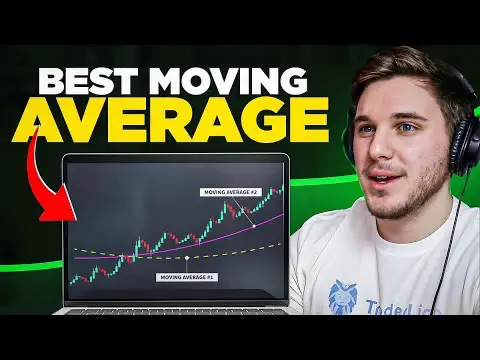Fail-Proof Method: Predict Market Trends with Moving Averages


How to Use Moving Averages to Predict Market Trends
Understanding market trends is essential for making informed stock trading decisions. One of the most reliable tools traders use to analyze trends is the moving average. Moving averages help smooth out price data and provide insights into market direction. Whether you’re a beginner or an experienced trader, mastering moving averages can give you a significant edge in the stock market.
In this article, we’ll explore what moving averages are, how they work, and practical strategies to use them effectively for predicting market trends.
What is a Moving Average?
A moving average (MA) is a technical analysis tool that calculates the average price of a security over a specific period. It helps traders identify trends by smoothing out short-term price fluctuations.
Types of Moving Averages
- Simple Moving Average (SMA)
The SMA is calculated by adding the closing prices of a stock over a specific period and dividing by the number of periods.
Formula:
SMA = \frac{\text{Sum of Closing Prices over n Periods}}{n}
- Exponential Moving Average (EMA)
The EMA gives more weight to recent prices, making it more responsive to price changes compared to the SMA.
Why Use Moving Averages in Trading?
Moving averages help traders:
Identify Trends: Determine whether the market is in an uptrend, downtrend, or sideways trend.
Signal Entry and Exit Points: Use crossovers and price levels to decide when to buy or sell.
Support and Resistance Levels: Moving averages can act as dynamic support or resistance lines.
Filter Out Noise: Smooth out price fluctuations to see the overall market direction.
How to Use Moving Averages to Predict Market Trends
- Identify Trend Direction
One of the primary functions of moving averages is to help identify the market trend:
Uptrend: Prices trade above the moving average, and the moving average slopes upward.
Downtrend: Prices trade below the moving average, and the moving average slopes downward.
Sideways Market: Prices oscillate around the moving average without a clear direction.
Pro Tip: Use a 50-day or 200-day SMA to identify long-term trends and a 20-day EMA for short-term trends.
- Crossover Strategy
The crossover strategy involves using two different moving averages—one short-term and one long-term.
Bullish Signal: When the short-term moving average crosses above the long-term moving average, it indicates a potential buy signal.
Bearish Signal: When the short-term moving average crosses below the long-term moving average, it signals a potential sell opportunity.
Common Combinations:
50-day SMA and 200-day SMA (Golden Cross and Death Cross)
10-day EMA and 30-day EMA for short-term trades
- Dynamic Support and Resistance Levels
Moving averages can act as dynamic support and resistance levels.
Support Level: When the price approaches a moving average from above, it may bounce back up.
Resistance Level: When the price approaches a moving average from below, it may face resistance and drop.
Trading Tip: Use the 50-day or 100-day SMA to identify key support and resistance levels.
- Combining Moving Averages with Other Indicators
While moving averages are powerful on their own, combining them with other indicators can improve the accuracy of your predictions.
Relative Strength Index (RSI): Helps confirm whether a stock is overbought or oversold.
MACD (Moving Average Convergence Divergence): Identifies momentum and trend direction.
Bollinger Bands: Help visualize price volatility and potential reversals.
Example: If the 50-day SMA shows an uptrend and the RSI confirms that the stock is not overbought, it may be a good time to buy.
- Use Multiple Time Frames
Analyzing moving averages across different time frames provides a comprehensive view of market trends.
Short-Term (5-day to 20-day MAs): Ideal for day traders and swing traders.
Medium-Term (50-day to 100-day MAs): Suitable for swing and position trading.
Long-Term (200-day MA): Best for long-term investors.
Trading Tip: Look for alignment across multiple time frames to increase confidence in your trades.
- Avoid Common Pitfalls
While moving averages are valuable, they have limitations. Here are some common pitfalls to avoid:
Lagging Indicator: Moving averages are based on past data and may not respond quickly to sudden price changes.
False Signals: Crossovers can generate false signals during choppy or sideways markets.
Overfitting: Using too many moving averages can lead to analysis paralysis.
Solution: Combine moving averages with other indicators and use price action analysis for confirmation.
Practical Example of a Moving Average Strategy
Let’s say you’re analyzing stock XYZ:
The 50-day SMA is at $150, and the 200-day SMA is at $145.
The stock price recently crossed above both moving averages and is trading at $155.
The RSI is at 55, indicating that the stock is not overbought.
Analysis: This scenario suggests a bullish trend, and the stock may continue to rise. A trader could enter a long position with a stop loss just below the 200-day SMA.
Benefits of Using Moving Averages in Trading
Simple to Use: Easy to understand and apply for traders of all levels.
Trend Confirmation: Helps validate the strength and direction of market trends.
Flexible Application: Can be used for various time frames and trading styles.
Final Thoughts
Moving averages are essential tools for predicting market trends and making informed trading decisions. By understanding how to use them effectively, you can enhance your trading strategy and increase your chances of success. Remember to combine moving averages with other indicators and risk management techniques to build a comprehensive trading approach.
Would you like a detailed guide on combining moving averages with other trading tools?







